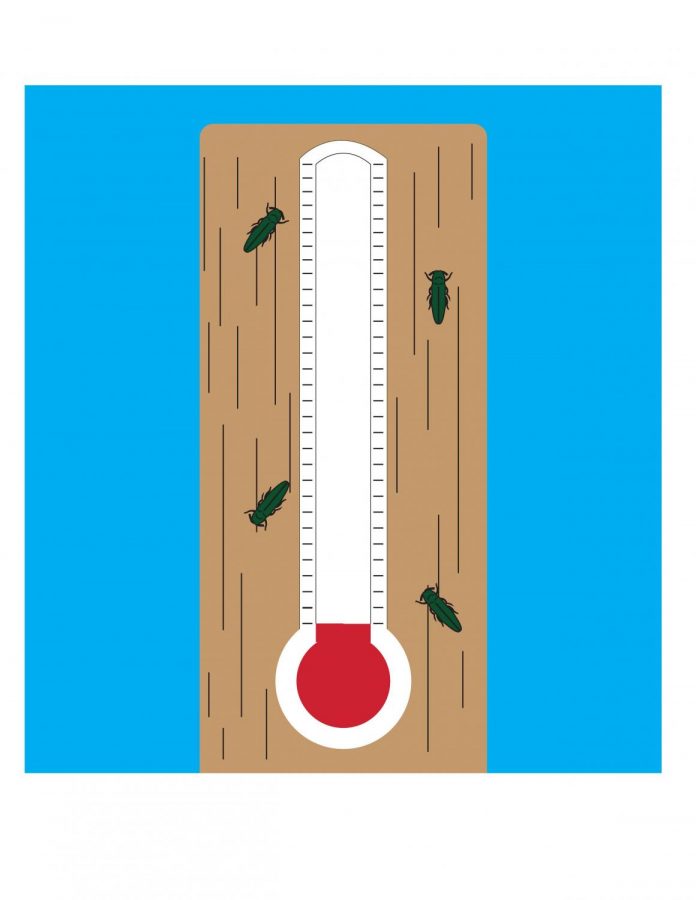Cold Temps Kill Invasive Species
The coldest temperatures in approx. 25 years can kill the Emerald Ash Borer
Illustration by Jonathan Callison
The recently cold temps could have had devastating effects on the invasive species, Emerald Ash Borers.
February 13, 2019
Many are complaining about the snow and frigid temperatures, and no one can seem to find a positive about the recent snowpocalypse. However, every polar vortex has its silver lining.
Recently, Michigan and other northern states across the country reached frozen tundra-like temperatures and were bombarded with treacherous amounts of snow. The last time wind chills reached this low were approximately 25 years ago. In the last few weeks, temperatures as low as negative 77 degrees fahrenheit, with the wind chill, blew across the upper part of the United States; the states in the south had temperatures dip below normal also. Not many states had wind chills 70 below, but a majority of states had temperatures between 20 and 50 below zero. The polar vortex shut down schools, colleges, companies, state offices, and cities nationwide. The frigid temperatures can cause frostbite to exposed skin in 10 to 15 minutes. Hypothermia is also a severe danger when temperatures drop this low. It is easy to be unhappy about the mass amounts of snow and the freezing cold temps; however, in Mich. and especially in the Grand Ledge area, there is a positive side to the cold.
According to the Arbor Day Foundation, the Emerald Ash Borer (EAB) was discovered in Detroit in 2002. The insect is originally from Asia and is believed to have gotten here in wood packaging from China. The insects are a bright metallic-green beetle, and the adults are normally ½ inch long and ⅛ inch wide. The problem with the beetles is that they kill ash trees. They feed on what is underneath of the bark, and what they eat transports water and nutrients to the rest of the tree. The range of ash trees in the United States is between seven and nine billion. In Mich., the Emerald Ash Borer has killed over 40 million ash trees.
“I have had to deal with dead ash trees the EAB have killed,” local arborist and owner of Woods Arbor Solutions, Steve Woods said. “The ash trees are a shadow of what they once were.”
Woods also commented on his experience with Emerald Ash Borers and their effects on ash trees.
“EAB has been a nuisance to those that have had ash trees, and because there are so few ash trees, EAB populations are way down,” Woods said. “The insects winter inside the trees and get some insulation from the bark.”
In an article by Minnesota Public radio, The Benefits of Extreme Cold in Minnesota, when temperatures hit minus 36 to 40, up to 99 percent of Emerald Ash Borer larvae can die. With the extreme temps in Mich., the Emerald Ash Borer population is sure to drop. This is not the first time Mother Nature has taken care of a nuisance insect. The last time a polar vortex was this cold was about 25 years ago, and before the cold came, the gypsy moths were a big problem.
The cold temps came, they saw, and they conquered the northern states. Only time will tell if the Emerald Ash Borer’s population was decimated. This winter has been an odd one, so hopefully spring is right around the corner.











